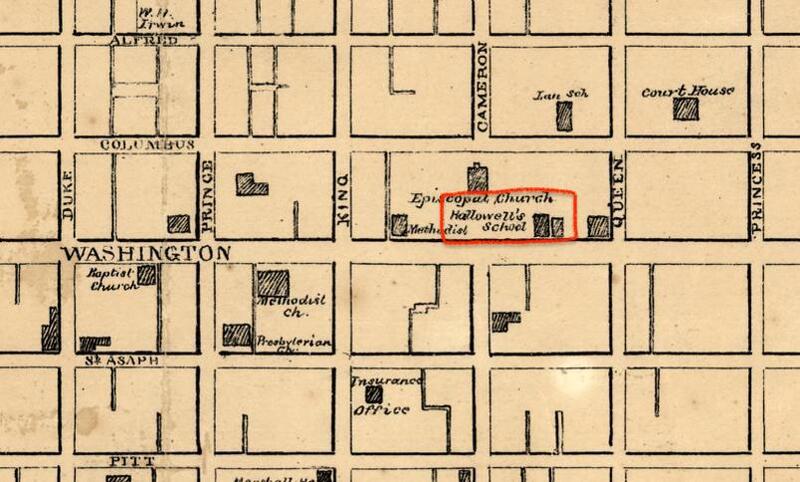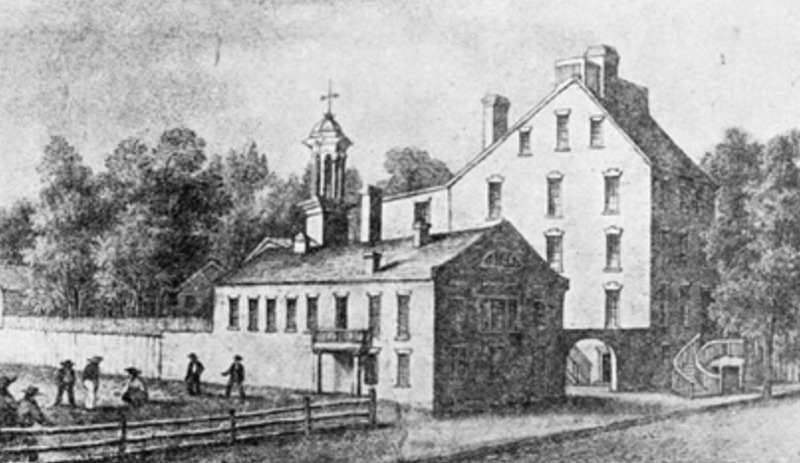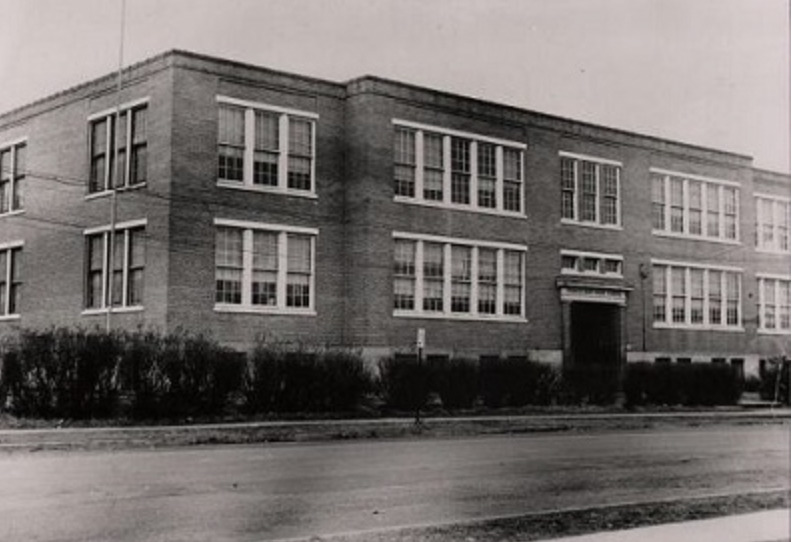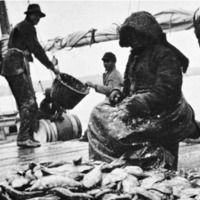Geographies of Segregation
In this section, I wanted to bring back McKittrick’s theory of contextualizing a person’s life through spatial geographies of oppression and resistance. Although the lynching event is now understood, it is also important to illustrate the life of Joseph McCoy by highlighting African American neighborhoods, churches, cemeteries, and schools that McCoy might have been surrounded by during the 19th century.
Schools
The first African American Schools that opened post-Civil War was the Snowden School for Boys and Hallowell School for Girls which comprised of elementary school level students. I noticed that even within the Black community, the girls and boys were segregated into designated schools.
In 1920, the Parker Gray school opened which was named after Snowden’s principal, John F. Parker and Hallowell’s principal, Sarah A. Gray because the original two schools were becoming overcrowded. It extended to include a three-year high school and was the first African American high school. In 1964, desegregation came to public schools, but the Parker-Gray school soon closed a year later, and the children were transferred to different schools (History of the Parker-Gray Schools, n.d.).
Cemetery
The Black Baptist Cemetery was established by the Silver Leaf Society of Alexandria in 1885. They were one of the many burial associations formed by African Americans in this century. The members of this society made sure that all funeral proceedings would be conducted smoothly by paying regular installments for caskets and a resting place. Eventually this cemetery was abandoned and used as a landfill until development plans were in action to help recover the site’s history and protect it (Historic Cemeteries of Alexandria, n.d.).
Church
Alfred Street Baptist Church was the oldest African American churches in Alexandria first established in the early 19th century located in “The Bottoms”, a Black neighborhood. Because it was present away from the dominated white society it was easy to develop their private self-sufficient community. Churches were one of the only structures where emancipated Blacks and slaves were permitted to be members. They helped provide education through Sunday school and assistance to those who have been unjustly jailed. Moreover, it was an educational, social, and economical center (Walker et al., n.d.).
Neighborhoods
There were majorly five African American neighborhoods that were gradually developed throughout the 18th and 19th centuries.
The first one, “The Bottoms”, was named so because the surrounding areas were at a higher elevation. It was established in 1790 and settled by emancipated Blacks who held long term rental agreements with their property owners. This was the community Joseph McCoy grew up in with his other siblings and grandmother. Subsequently, “Hayti” was developed around a decade later by Mordecai who rented houses to free Blacks. “The Berg” was established during the Civil War when a large number of refugees arrived to escape slavery. It was a republican heavy area and the men in this community would protect the youth from lynching events. The 1700s had a “Fishtown” which was mainly a seasonal village where every fishing season, many stalls would open to sell fish. It was located east of “The Berg” on the waterfront and constituted free and enslaved Blacks. Lastly, “Uptown” was an area established by the end of the Civil War around 1899. It was a Black dominated community however, whites also lived there (Soil Collection Remembrance Event, n.d.).
Through these landmarks, I recognized the repetitive segregated nature of the county during the late 19th century and wanted to know what changes were implemented since then. Therefore, the final section of my narrative focuses on visualizing what remains at present day and if measures are put into place for the public to know about this extensive history.
References:
Historic Cemeteries of Alexandria. (n.d.). City of Alexandria, VA. Retrieved May 6, 2023, from https://www.alexandriava.gov/historic-sites/historic-cemeteries-of-alexandria
History of Alexandria’s African American Community. (n.d.). City of Alexandria, VA. Retrieved May 6, 2023, from https://www.alexandriava.gov/historic-alexandria/history-of-alexandrias-african-american-community
History of the Parker-Gray Schools. (n.d.). City of Alexandria, VA. Retrieved May 6, 2023, from https://www.alexandriava.gov/museums/basic-page/history-of-the-parker-gray-schools
Soil Collection Remembrance Event. (n.d.). City of Alexandria, VA. Retrieved May 6, 2023, from https://www.alexandriava.gov/cultural-history/soil-collection-remembrance-event
Walker, M. K., Phil, M., Pappas, M., Daugherty, J., Martin, C., & Crowell, E. A. (n.d.). ARCHAEOLOGICAL EVALUATION OF THE ALFRED STREET BAPTIST CHURCH (44AX161), ALEXANDRIA, VIRGINIA.
By: Poojita Kondur





